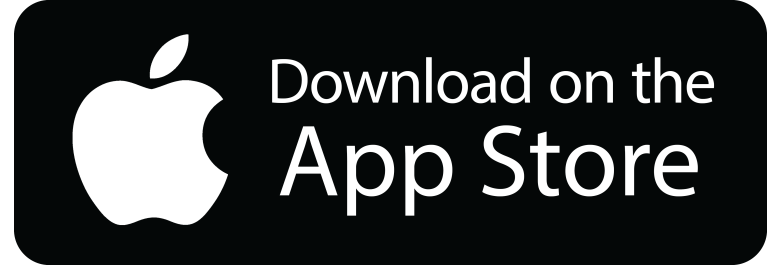Understanding Why Start-up Ideas Fail
Poor Market Fit
Structural Issues
Excessive Adoption Friction
1. Assessing the Founder-Market Fit
Self-Assessment
You can ask yourself the following questions: What are my core skills, expertise, and areas of knowledge? How do my past experiences align with specific market needs? In which industries or sectors do I bring have strong interest and passion?
Market Research
Feel free to pose these queries to yourself: What markets or industries am I considering for my start-up idea? What are the current trends and challenges within these markets? Who are the key players, competitors, and stakeholders in these markets? What gaps or unmet needs exist in these markets that my idea could address? How large is the potential target audience for my product or service? Are there any regulatory or legal considerations within the chosen market?
Networking
2. Going Beyond Personal Problems
Observation
For example, you can take a notebook and jot down small dissatisfactions that you will encounter in everyday life. Then you revisit this list and wonder if other people will also experience the same dissatisfaction. And behind that, there is a solution, so you confirm there is a market for your ideas.
Interviews and Surveys
Brainstorming
When brainstorming, it would be useful to ask yourself the following questions: How can I validate the problems I've identified as genuinely widespread and not just isolated incidents? Are there any cultural, demographic, or geographic factors that influence the problems people experience?
3. Thinking About the Future
Trend Analysis
Consider asking this question to yourself: What emerging technologies or trends are expected to impact the industry or market I'm interested in?
Scenario Planning
Here are some questions to direct towards yourself: How might these future developments create opportunities or challenges for a start-up like mine? Have I considered various future scenarios and how my start-up idea might fit into each? Are there potential risks associated with the changing landscape, and how can I mitigate them?
4. Evaluating Your Idea
Market Research
You can inquire about the following: Who is the target audience for my product or service, and what are their specific needs and preferences? What are the key features or benefits that make my idea stand out from competitors?
Prototype and Testing
Business Plan
Financial Analysis
Frameworks for Developing Your Start-up Idea
Design Thinking
Reverse Brainstorming
de Bono's Six Thinking Hats
In summary, the process of developing a successful startup idea encompasses self-assessment, market research, creative problem-solving, foresight into future trends, rigorous evaluation, and the integration of problem-solving frameworks like Design Thinking, Reverse Brainstorming, and the Six Thinking Hats technique. By actively engaging with these steps, aspiring entrepreneurs can discover innovative concepts that are well-aligned with market needs and have the potential for long-term success. Ready to launch? Partner with Creo Incubator and ignite your start-up.
In the world of start-ups, success is elusive, and understanding why some promising ideas falter is crucial for aspiring entrepreneurs. Let's delve into common pitfalls that can lead to the failure of start-up concepts.
Poor Market Fit
Many start-ups never attain the elusive product-market fit, and even a great product can flounder in the wrong market.
The Electronic Arts (EA) and Zynga example underscores the concept of poor market fit. While EA was a major player in the traditional gaming market, it failed to adapt to the emerging social gaming trend. Zynga, a start-up, recognised the disruptive potential of social gaming, seized the opportunity, and succeeded by catering to the changing preferences of gamers. This serves as a compelling illustration of how even established companies can struggle with market fit, leading to missed opportunities for growth and innovation.
Structural Issues
Certain markets, like the life sciences industry, come with specific structural challenges, such as rigorous regulatory compliance like FDA requirements, making achieving product-market fit particularly daunting. Such markets typically have established monetisation methods that companies must adhere to, involving either direct user payments or third-party payments, which can include advertisers or large corporations like healthcare insurers. A common start-up error is assuming user willingness to pay when that may not be the case.
Product Blindness
While building a product you genuinely enjoy using is essential, product blindness can still lead to subpar products. Even individuals who actively use their own products can still release subpar products due to a phenomenon known as 'product blindness.' This occurs when excessive familiarity with the product leads to subconsciously overlooking its shortcomings. For example, difficulties with signing up, finding the website online, or data reliability issues may be dismissed by using existing accounts or quick workarounds.
Excessive Adoption Friction
Many promising products fail due to excessive adoption friction, like lengthy sign-up forms, requiring users to enter extensive information manually. In contrast, user-friendly platforms like Facebook, with straightforward address-book imports, rapidly unlock most of the site's value, providing a lesson in minimising barriers to adoption.
Start-ups often fail due to a lack of product-market fit, structural challenges, inadequate monetisation strategies, product blindness, and excessive user adoption friction. Therefore, how can you proactively address these challenges when developing a start-up idea to increase the likelihood of its success?
1. Assessing the Founder-Market Fit
Assessing the founder-market fit is about understanding how well your skills, experiences, and passion align with the target market. It's not just about identifying a problem you're personally familiar with but ensuring you have the knowledge and capability to address it effectively. For instance, if you're a healthcare professional, your founder-market fit might be strong for launching a healthcare-related start-up.
Self-Assessment
Reflect on your own skills, experiences, and interests. Consider what industries or areas you are passionate about.
You can ask yourself the following questions: What are my core skills, expertise, and areas of knowledge? How do my past experiences align with specific market needs? In which industries or sectors do I bring have strong interest and passion?
Market Research
Explore different markets and industries to identify gaps or opportunities where your expertise can be a valuable asset.
Feel free to pose these queries to yourself: What markets or industries am I considering for my start-up idea? What are the current trends and challenges within these markets? Who are the key players, competitors, and stakeholders in these markets? What gaps or unmet needs exist in these markets that my idea could address? How large is the potential target audience for my product or service? Are there any regulatory or legal considerations within the chosen market?
Networking
Connect with professionals in your chosen field to gain insights and build a network that can help validate your founder-market fit.
2. Going Beyond Personal Problems
Observation
Pay close attention to the challenges and inconveniences people around you encounter in their daily lives. This can be in various settings, from work to personal activities.
For example, you can take a notebook and jot down small dissatisfactions that you will encounter in everyday life. Then you revisit this list and wonder if other people will also experience the same dissatisfaction. And behind that, there is a solution, so you confirm there is a market for your ideas.
Interviews and Surveys
Engage with potential users through interviews and surveys to understand their main points, needs, and desires. This can help you uncover problems you might not have personally experienced.
Brainstorming
Encourage creative thinking sessions with a diverse group of individuals to generate ideas that address a broader range of problems. These individuals can be your mentors , potential business partners or industry experts. These collaborative brainstorming sessions can be enhanced by integrating reverse brainstorming techniques.
When brainstorming, it would be useful to ask yourself the following questions: How can I validate the problems I've identified as genuinely widespread and not just isolated incidents? Are there any cultural, demographic, or geographic factors that influence the problems people experience?
3. Thinking About the Future
Trend Analysis
Stay informed about emerging trends and technological advancements in your chosen industry. This might involve following relevant publications, attending conferences, and engaging with experts.
Consider asking this question to yourself: What emerging technologies or trends are expected to impact the industry or market I'm interested in?
Scenario Planning
Consider different future scenarios and how your start-up idea might fit into each. For example, you can think about opportunities or challenges that you might face along the way. This exercise can help you adapt to changing circumstances.
Here are some questions to direct towards yourself: How might these future developments create opportunities or challenges for a start-up like mine? Have I considered various future scenarios and how my start-up idea might fit into each? Are there potential risks associated with the changing landscape, and how can I mitigate them?
4. Evaluating Your Idea
Market Research
Conduct in-depth research to understand the market demand, competition, and target audience. You can use surveys, focus groups, and online resources to gather data.
You can inquire about the following: Who is the target audience for my product or service, and what are their specific needs and preferences? What are the key features or benefits that make my idea stand out from competitors?
Prototype and Testing
Create a minimum viable product (MVP) or prototype to test your idea with real users. It’s essential to gather feedback and iterate on your solution.
Business Plan
Develop a comprehensive business plan that outlines your strategy, revenue model, and growth projections. Seek guidance from mentors or advisors to refine your plan.
Financial Analysis
Calculate the potential costs, funding requirements, and revenue projections to ensure your idea is financially viable and sustainable.
Frameworks for Developing Your Start-up Idea
Design Thinking
Design thinking is a problem-solving approach that centers on understanding and empathising with users, making it crucial for generating a successful business idea. By gaining profound insights into user needs and challenges, you can ideate and create innovative concepts that directly address these pain points.
Reverse Brainstorming
Reverse brainstorming , when applied to finding a new business idea, involves exploring ways to create problems instead of solving them. You intentionally generate challenges, inconveniences, or unmet needs within a given context. By flipping the traditional problem-solving approach, this method encourages innovative thinking and the identification of opportunities in addressing these artificially created issues. It often leads to unique and disruptive business concepts that cater to emerging market demands or unexplored niches.
de Bono's Six Thinking Hats
The Six Thinking Hats technique, when used to generate a new business idea, offers a structured approach to explore various perspectives and angles. You can wear different "hats," each representing a different thinking mode, such as creativity, critical analysis, and optimism. By systematically switching between these modes, they can thoroughly evaluate a potential concept from all angles. This method encourages well-rounded idea development, ensures that all aspects are considered, and helps in refining a business idea by addressing its strengths, weaknesses, opportunities, and potential risks.
In summary, the process of developing a successful startup idea encompasses self-assessment, market research, creative problem-solving, foresight into future trends, rigorous evaluation, and the integration of problem-solving frameworks like Design Thinking, Reverse Brainstorming, and the Six Thinking Hats technique. By actively engaging with these steps, aspiring entrepreneurs can discover innovative concepts that are well-aligned with market needs and have the potential for long-term success. Ready to launch? Partner with Creo Incubator and ignite your start-up.
Write your awesome label here.
Never miss our news!
Thank you!
Get updates on live streams, news and more right in your mailbox.



